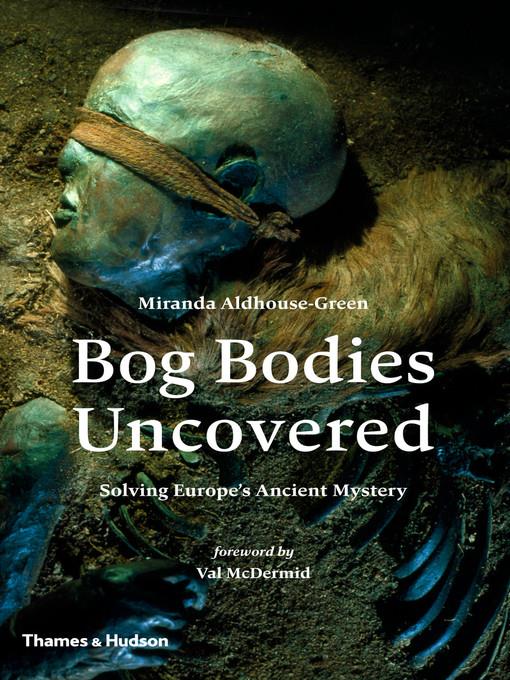
Bog Bodies Uncovered
Solving Europe's Ancient Mystery
کتاب های مرتبط
- اطلاعات
- نقد و بررسی
- دیدگاه کاربران
نقد و بررسی

September 28, 2015
In this fascinating, if dry, study, British archaeologist and Celt scholar Aldhouse-Green (The Celtic Myths) explores the enigmatic phenomenon of the bog bodies: prehistoric people whose bodies have been preserved or mummified in the peat bogs of northern Europe, only to be discovered centuries later. "This book is a quest, a journey towards an understanding of an ancient people, their lives, deaths, their hopes, fears and beliefs," she writes with scholarly enthusiasm. "Who were the bog people? What kinds of lives did they lead? How and why were they violently killed, and who murdered them?" As she discusses several dozen such figures, including the infamous Lindow Man and the misidentified Queen Gunhild, she attempts to unravel the circumstances behind their lives and deaths. Archeology, history, forensics, and anthropology all play roles in analyzing this puzzle, as Aldhouse-Green draws on a huge amount of material to unlock the secrets of the past. She recounts with morbid glee the bizarre, tragic, and often gruesome details surrounding her subjects. And in answering some of her many questions, she sheds light on the people and cultures of a long-past time. Though her tone does tend towards the academic, Aldhouse-Green writes for a wide audience, making this a useful work for anyone interested in the topic.

July 1, 2015
A real-life forensic thriller revealing the secrets of ancient and modern bodies preserved in bogs-some for nearly 3,000 years-in the United Kingdom, the Netherlands, Denmark, and northern Germany. Aldhouse-Green (Emeritus, Archaeology/Cardiff Univ.; The Celtic Myths: A Guide to the Ancient Gods and Legends, 2015, etc.) describes how the environments of these bogs, formed from marshes filled with half-decomposed, partially decayed vegetation, are both the subject of myth and of scientific interest. "Bogs were and are special places, miasmic and fearsome," she writes. "They hover in the 'tween space between land and water." The preserved dead bodies found in them "are an archaeologist's dream." Their lack of oxygen, combined with bog acids and a particular bog moss, creates the conditions in which bodies are preserved, "complete with soft tissue, skin, hair, finger- and toenails and with their internal organs intact too." The discovery of hundreds of bog bodies offers clues to their social statuses, the foods they ate, and the manners of their deaths. With modern forensic tools, it is possible to probe whether the cause of death was accidental or the result of violence and whether the victim was killed as a ritual sacrifice, punished for heinous crimes, or denied a traditional burial as a mark of shame. Some individuals no doubt met accidental deaths, and more recently, others have been identified as probable murder victims. Aldhouse-Green relies on her archaeological expertise and knowledge of Celtic myths, along with accounts of ancient authors on barbarian rituals, to ponder "the million-dollar question: whether human sacrifice was behind some or all of the Iron- and Roman-period bog deaths." Wisely reminding us that the bog bodies "are not artifacts but people" worthy of respect, the author speculates on the fact that a number of the bodies seem to reveal deformities that may have singled individuals out for ritual sacrifice, perhaps to deities thought to reside in the bogs. An intriguing window into the past.
COPYRIGHT(2015) Kirkus Reviews, ALL RIGHTS RESERVED.

September 1, 2015
Aldhouse-Green (emeritus, archaeology, Cardiff Univ.; The Celtic Myths) specializes in Iron Age archaeology and Shamanism and has authored several previous works on Celtic beliefs. Her latest contributes a wealth of information and a scientific approach to presentation of data and discussion, and offers an updated and in-depth treatise on the growing body of knowledge on preserved human remains recovered from the peat bogs of northern Europe. Sections reveal how the remains were discovered, the cultural realm of the decedents, how bogs preserve human bodies, and the deaths of individuals such as Tollund Man and Lindow Man. Also discussed is the forensic science used to investigate the deaths of these individuals. An appendix lists the most significant bog body finds including condition, age, cause of death, relative date of death, and current institution of location. VERDICT This work excels in drawing the reader into the story of each individual and is suitable for anyone interested in history, forensic science, Iron Age archaeology, or the study of human remains. Owing to its scientific nature, archaeologists would also benefit from reading this book. The use of multiple sources of data and lines of inquiry makes it an exquisite example of writing and investigation.--John Dockall, Austin, TX
Copyright 2015 Library Journal, LLC Used with permission.

























دیدگاه کاربران